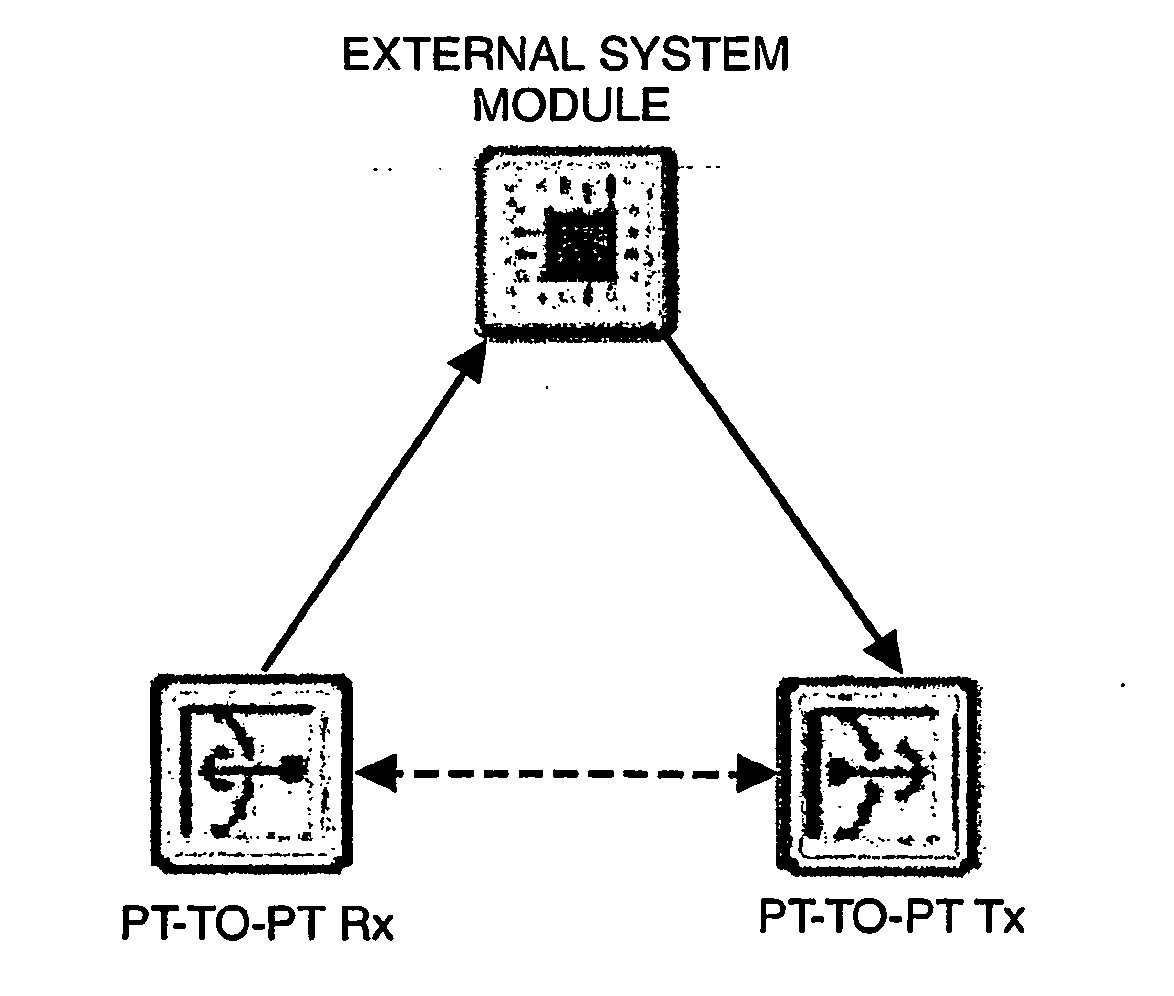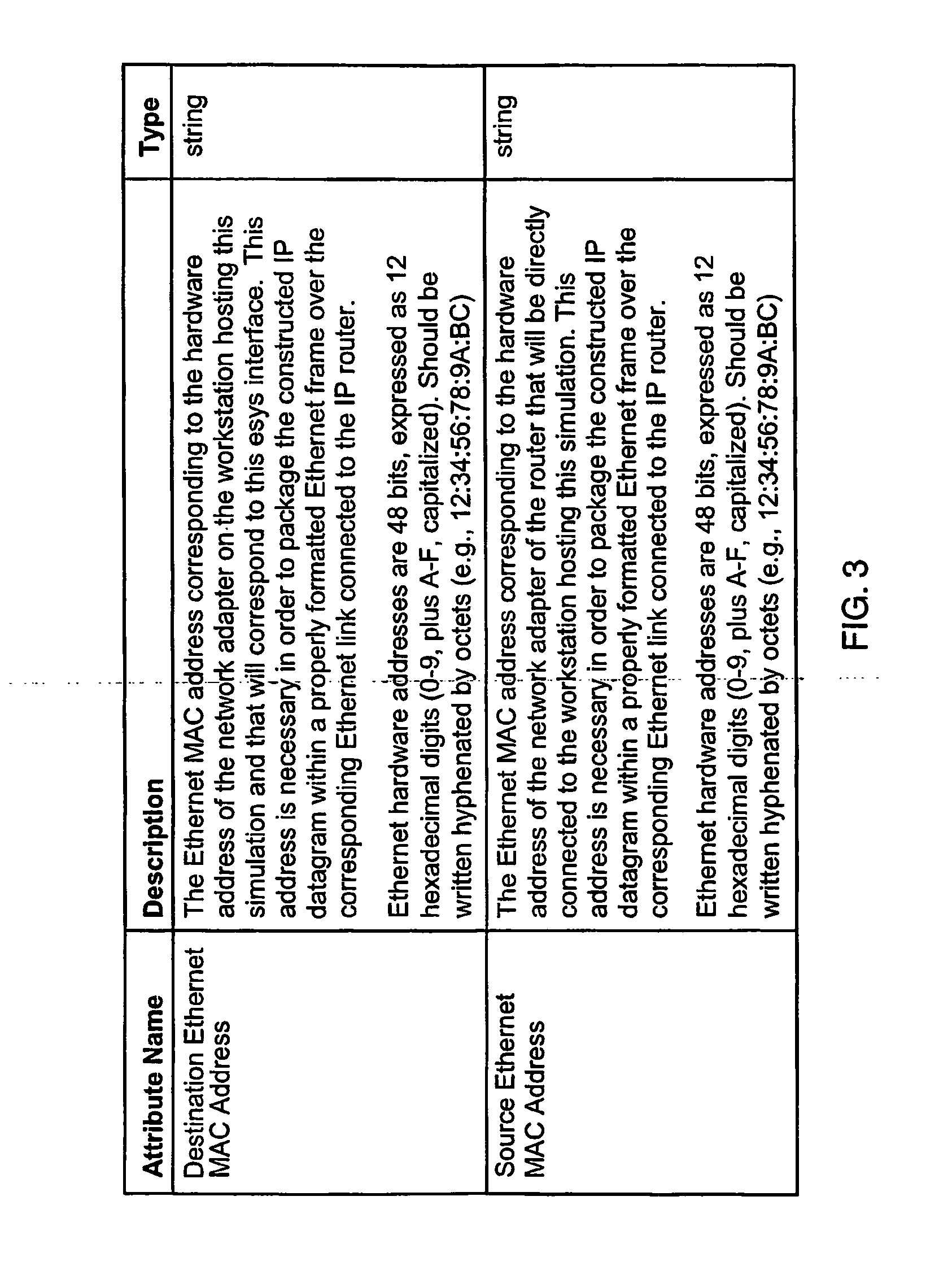Interfacing Real and Virtual Networks in Hardware-in-the-Loop (HITL) Simulations
a hardware-in-the-loop and simulation technology, applied in the field of network data processing, can solve the problems of limited number of actual prototypes ordinarily available for testing, difficult to test the prototypes exhaustively, and the number of disparities between the actual (real) hardware and the modeled specifications
- Summary
- Abstract
- Description
- Claims
- Application Information
AI Technical Summary
Benefits of technology
Problems solved by technology
Method used
Image
Examples
example one (fig.8)
[0053]Example One (FIG. 8)
[0054]Two virtual networks A and B are modeled and simulated by running OPNET on corresponding workstations A and B. The virtual networks exchange packets with one another through real hardware devices including routers. Specifically, virtual gateway nodes are configured in the simulations for connection with physical Ethernet ports on the corresponding workstations. Simulated data traffic is generated and routed within each virtual network through virtual LANs, workstations and routers. When a source node in virtual network A sends traffic to a destination server node being modeled in virtual network B, virtual network A routes the traffic across its routers to its virtual gateway node so that the traffic can be sent to the virtual network B via the gateway node and the real network hardware in the loop.
[0055]The gateway node in virtual network A translates the traffic into real IP packets, encapsulates the packets in Ethernet frames for routing in the rea...
example two (fig.9)
[0056]Example Two (FIG. 9)
[0057]Real IP packets created in real IP Network A are sent across a simulated virtual simulated network to real IP Network B. Virtual gateway nodes are configured in the simulated network for connecting the hardware devices of the real networks in a loop with the simulated network. The translation of real IP packets from network A into packets to be routed through the virtual network, is performed so as to preserve the contents and integrity of the real IP packets when the packets arrive at real network B.
example three (fig.10)
[0058]Example Three (FIG. 10)
[0059]Two virtual networks A and B are set up for exchanging virtual and real IP packets. Each virtual network is interfaced via virtual gateway nodes with two different types of physical devices capable of sending real IP network traffic; namely, a Real Network and a Radio. Real IP traffic is exchanged between the real networks and the radios through the virtual networks. Virtual traffic is exchanged and routed to respective destinations in the virtual networks.
PUM
 Login to View More
Login to View More Abstract
Description
Claims
Application Information
 Login to View More
Login to View More - R&D
- Intellectual Property
- Life Sciences
- Materials
- Tech Scout
- Unparalleled Data Quality
- Higher Quality Content
- 60% Fewer Hallucinations
Browse by: Latest US Patents, China's latest patents, Technical Efficacy Thesaurus, Application Domain, Technology Topic, Popular Technical Reports.
© 2025 PatSnap. All rights reserved.Legal|Privacy policy|Modern Slavery Act Transparency Statement|Sitemap|About US| Contact US: help@patsnap.com



